Classical Conditioning:
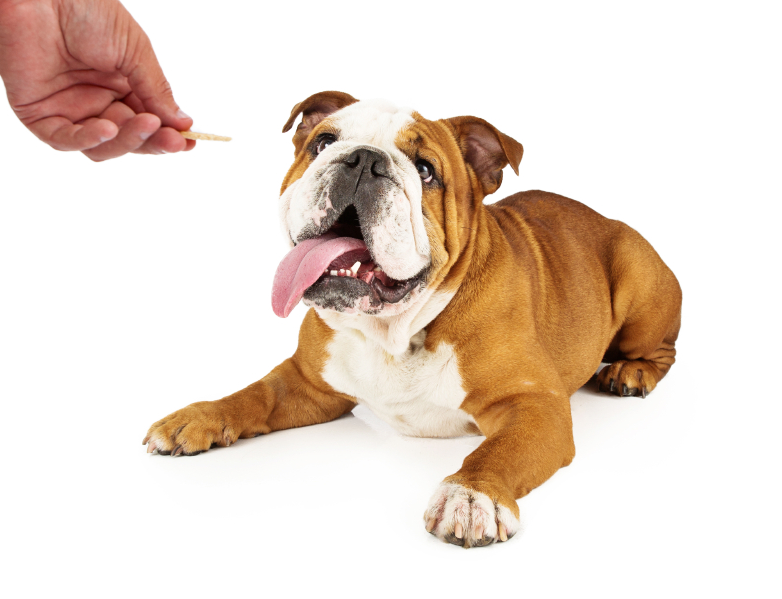
The most famous example of classical conditioning would be Pavlovs dog.
Ivan Pavlov ran experiments where a bell would be rung each time before meat powder was sprayed into a dog’s mouth. The meat powder of course caused the dogs to salivate.
Initially, the bell ringing was a completely unrelated event to the dogs salivating. But by repeating the ringing of the bell before the meat powder was given, the dogs learnt the bell ringing meant that meat was on its way.
Eventually the sound of the bell alone was enough to cause the dogs to salivate.
This is an example of classical conditioning.
Classical conditioning occurs on a daily basis without us even trying or knowing.
When your Labrador hears the rattle of the dog bowl, he starts to salivate, and when he sees you pick up his dog lead he gets frantically excited about going outside for a walk.
These weren’t natural behaviors, they were learned through classical conditioning.
The fact such connections can be made and behaviors predictably triggered can be used to a trainers advantage, however it’s not one of the most used dog training methods in comparison to other techniques.
Operant Conditioning – The Most Used of all Dog Training Methods:
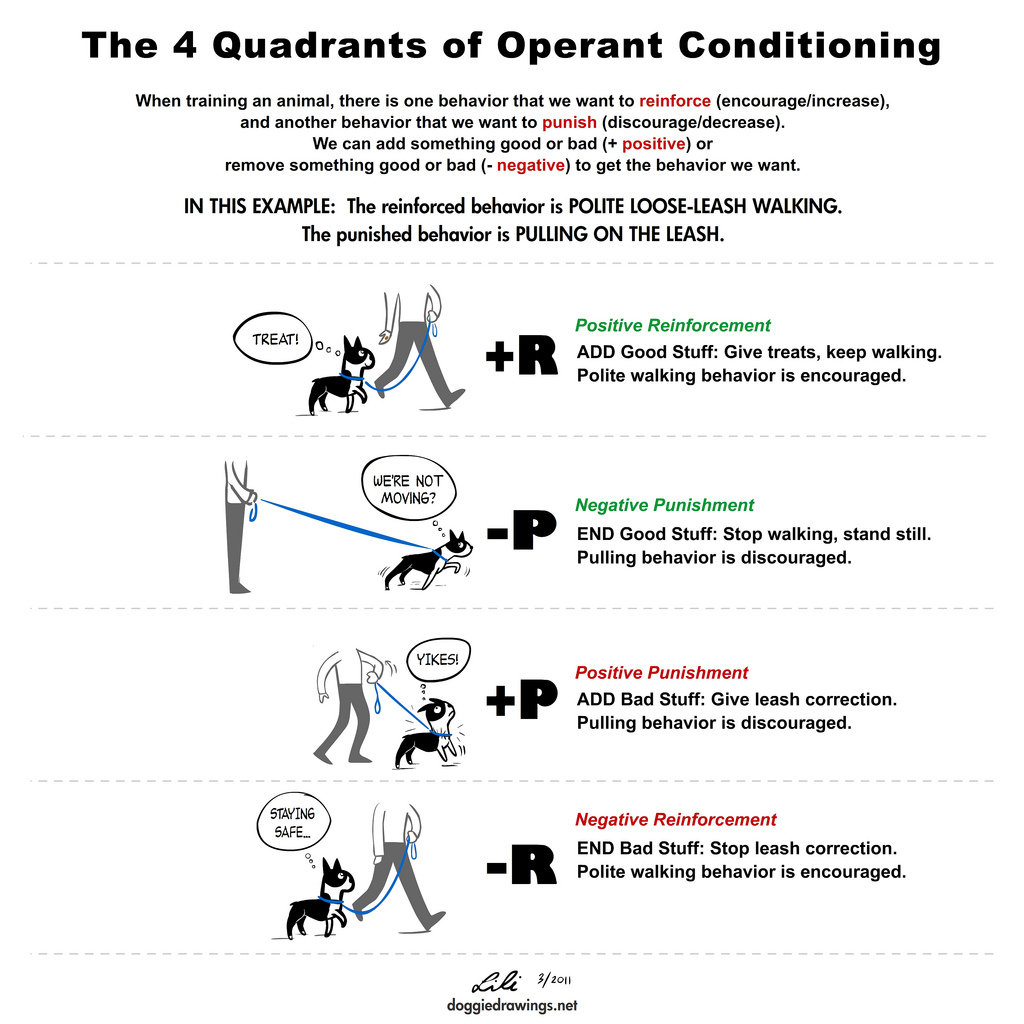
‘Operant conditioning’ is a method of dog training based on controlling the environment so that a behavior results in either pleasant or unpleasant consequences.
f your Labrador performs a certain behavior and something good happens, he’s likely to increase performing that behavior. However, if your Lab performs a behavior that results in a bad consequence, over time he’ll learn to decrease that behavior.
By ‘punishing’ bad behaviors we can decrease them, and by ‘reinforcing’ good behaviors we can increase them.
There are 4 components (or quadrants) to operant conditioning. Before listing them it’s helpful to know that a ‘punishment’ reduces a behavior and a ‘reinforcement’ increases it.
‘Positive’ and ‘negative’ aren’t good and bad things, they only refer to adding something or taking something away respectively:
- Positive reinforcement – Increases behavior by adding something the dog sees as pleasant. Example: Giving high praise or a treat if your Labrador sits when asked.
- Positive punishment – Decreases behavior by adding something the dog sees as unpleasant. Example: Your dog jumps up and you turn away and ignore him.
- Negative reinforcement – Increases behavior by taking something away that’s unpleasant. Example: Pulling up on your dog’s collar until he sits. When he sits, you release the collar. So an unpleasant thing is removed when the behavior is performed.
- Negative punishment – Decreases behavior by taking something away that’s desirable. Example: You want to play fetch, but your Labrador repeatedly jumps up and tries to snatch the toy. You can hold the toy in such a way that he knows he will not get it until he stops and relaxes. He will learn you will only play fetch when he is calm and patiently waiting, thereby reducing jumping and snatching.
These methods are very effective and have been used to train dogs, dolphins, parrots, rats and more besides for many decades now.
Traditional Dog Training:
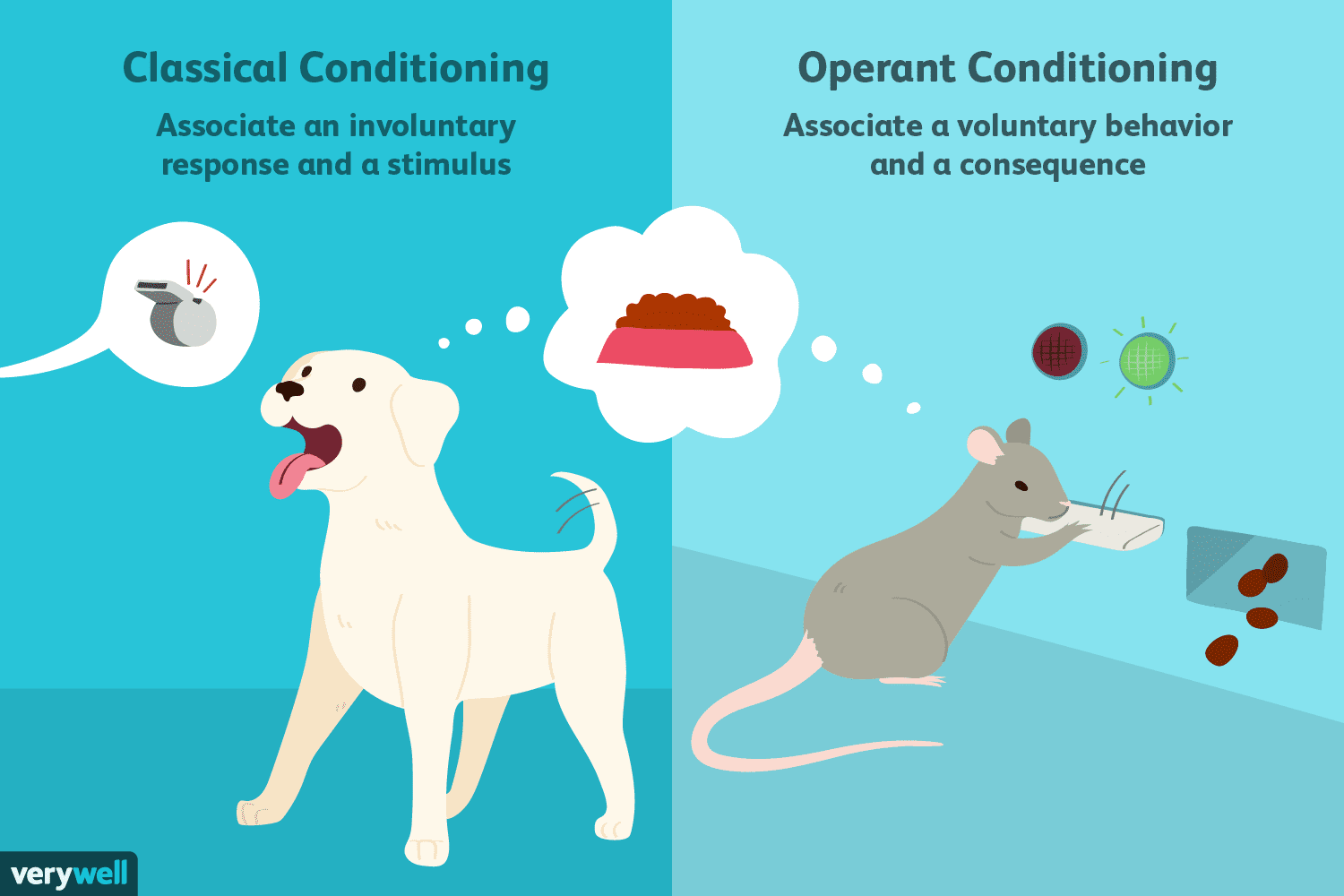
The term “traditional training” is used to describe methods pre-dating the modern ‘science-based’ methods that (almost) everybody uses today after dramatic increases in our knowledge of how dogs think and learn.
Traditional dog training makes use of aversives, punishment, and physically coercing (forcing) a dog into desired behaviors.
Most of the theory comes from dominance theory and wolf pack theory, both of which have been proven incorrect by modern science.
Traditional training kind of allows a dog to make mistakes and then punishment is given to lessen the behavior in future.
The theory goes that dogs behave badly because they’re trying to assume a position of dominant rank, and the trainer spends time asserting to the dog that the trainer is the more dominant ‘alpha’ one and must be obeyed.
Traditional trainers use corrections such as a sharp snap on the leash, pinches, grabs and ‘alpha rolls’ when a bad behavior is seen, though most do combine this with praise (and maybe even rewards) for reinforcement when the correct behavior is given.
Science Based Training – Possibly the Best of all Dog Training Methods:
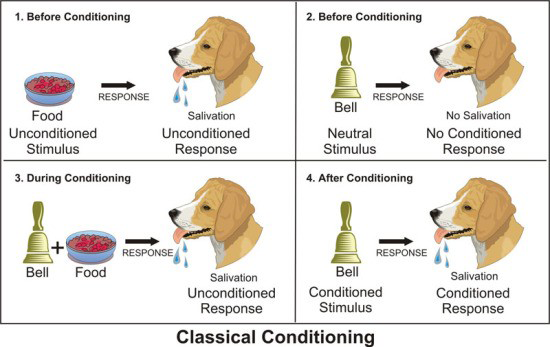
There’s quite rightly a lot of buzz around ‘science based dog training’ today, but it’s kind of hard to clearly define into a single, all-encompassing definition due to its wide breadth and ever-changing theories.
In science based training, a deep understanding of dogs, their nature, behavior, operant conditioning, classical conditioning, punishers, reinforcers, everything in this article and much, much more besides comes into it.
Science based dog training is constantly being developed from results of experiments by animal behaviorists and vets to try to truly understand dogs.
And this is where science based training stands apart from the traditional training methods.
A science based trainer will have an understanding of the traditional methods, dominance theory and wolf pack theory.
But they know these theories have been debunked and proven false, that coercion and physical punishment is unnecessary and those methods can lead to dogs with suppressed personalities and only ‘obeying through fear’.
Science based trainers try to train dogs in the most humane ways possible, taking into account the dogs psychological needs and natural ways of learning.
They try to work with the dog and not merely try to rule them with an iron fist.
And science based training is forever changing.
As new studies are undertaken, new evidence comes to light and old theories are thrown out and new ones brought in, causing old methods to be thrown out and new ones adopted.
The majority of science based training centers on operant conditioning, but many more factors are taken into account.
For example, before trying to change a behavior, everything surrounding and leading up to it is first studied and understood.
Positive Reinforcement Training:
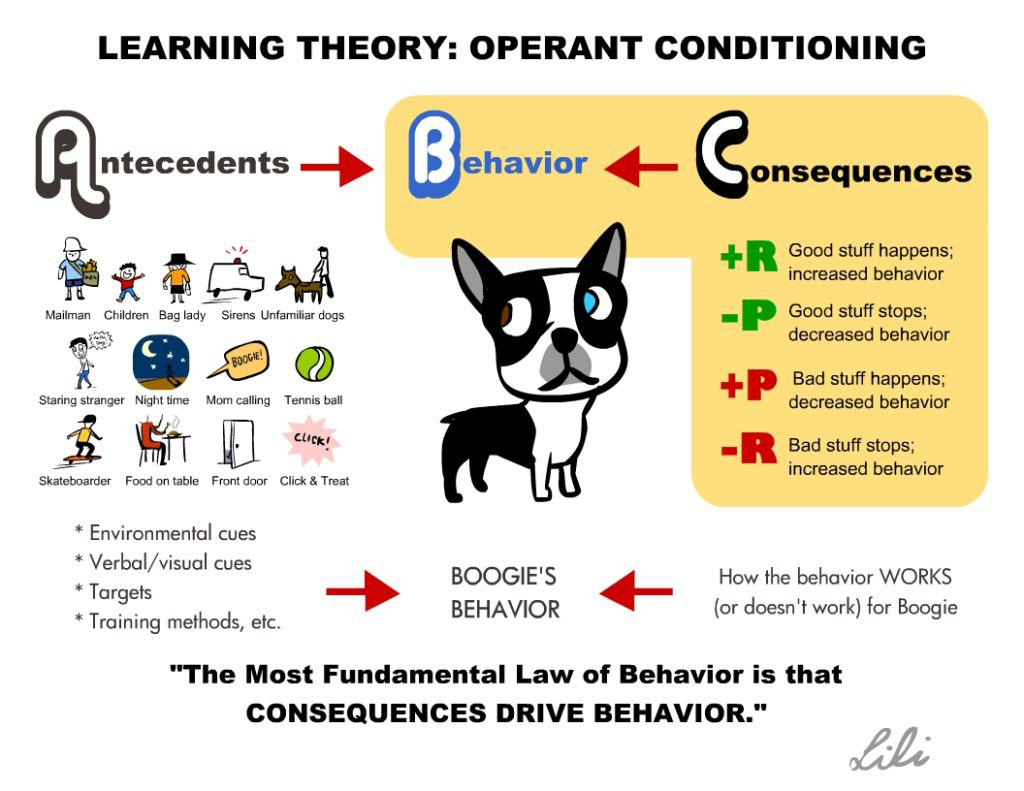
Although positive reinforcement is a part of operant conditioning, when used to describe a sole method of training it refers to a trainer who exclusively uses positive reinforcement and makes this the absolute pivotal method of their technique. Good behaviors get rewarded, but bad or unwanted behaviors simply go ignored.
I’ve read this method can work but it isn’t usually very effective because the dog is never told that a behavior is wrong.
This can result in bad behaviors getting worse because by just ignoring a behavior, we’re allowing a dog to find their own reward and hence reinforce the behavior.
For example: If your Labrador chases a squirrel and you simply ignore it, not telling your Lab that this behavior is wrong, he gets rewarded because chasing squirrels is fun.
He found his own reward and will almost certainly want to do it again. The bad behavior has been reinforced.
For this reason, using positive reinforcement alone isn’t a great strategy. It’s generally agreed some form of punishment simply must be used in conjunction.
Negative Reinforcement Training:
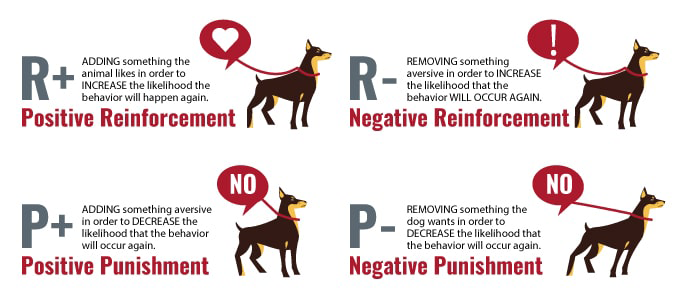
The word ‘negative’ here doesn’t mean bad and it certainly doesn’t mean being abusive to your dog. Remember that ‘negative’ means taking something away, and ‘reinforcement’ means trying to increase a behavior.
Negative reinforcement is therefore taking away something undesirable to increase a behavior.
Negative reinforcement is a tricky one to describe as most times it can also be seen as positive punishment. The same action could be either depending on the view taken and the desired outcome.
For example: When walking with your dog and using a head halter, if he tries to walk right and you gently pull to correct him to the left:
- Positive punishment: You applied a tug to prevent him pulling left. Therefore you added a punishment to prevent a behavior.
- Negative reinforcement: Your dog doesn’t like the feel of the tug on his head, therefore to relieve it, he comes back in line. The bad stimulus of a strain on his neck was removed and the behavior of walking in line with you is reinforced.
Clicker Training – one of the Most Popular Methods of Training:
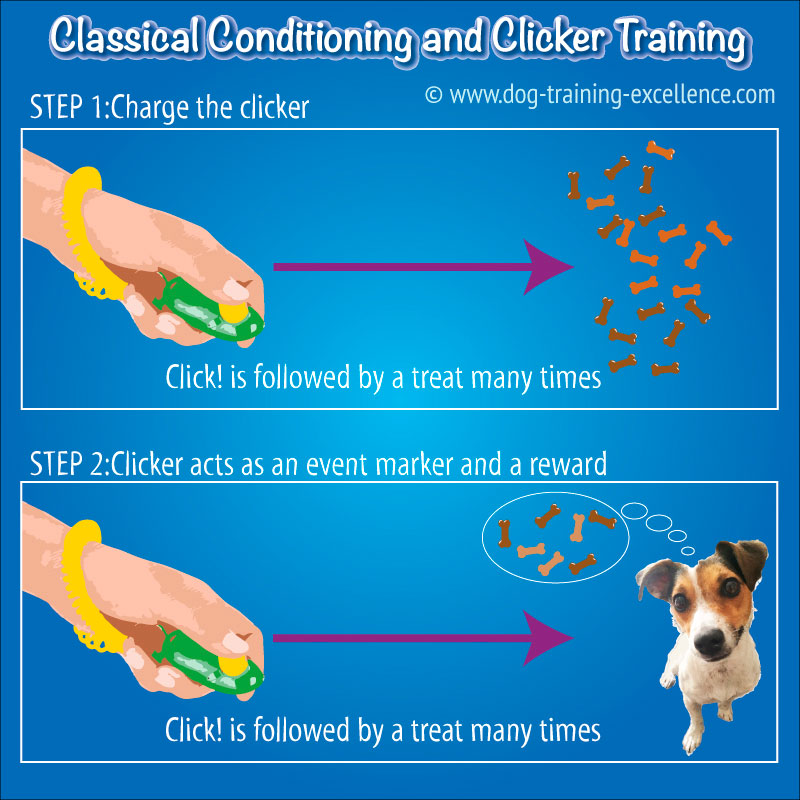
Clicker training is a very effective and highly popular type of marker training, where the clicker is used as the marker.
Clicker training uses a little hand-held device to create a sound that you use to ‘mark’ the point at which your dog completes a desirable behavior. It’s easier to more accurately mark where a desired behavior ends with a click than it is with your voice. Therefore communication between you and your dog is much better, which leads to more effective training.
So how does it work? First there’s a little classical conditioning where you mark a good behavior with a click and then treat your dog with a reward.
After many repetitions, your lab soon associates the click with a reward, and the click itself soon becomes rewarding enough so the treats can be phased out.
Then it’s on to operant conditioning where you use the clicker for positive reinforcement, clicking every time a desired behavior is performed.











